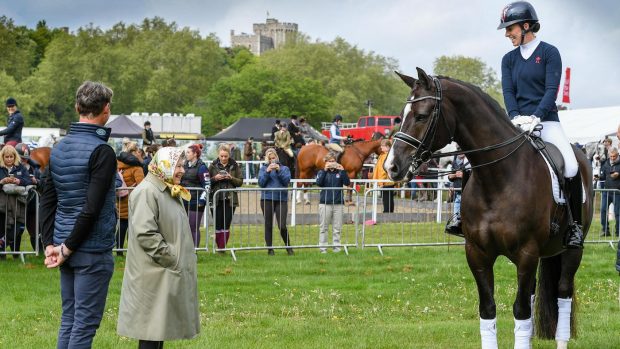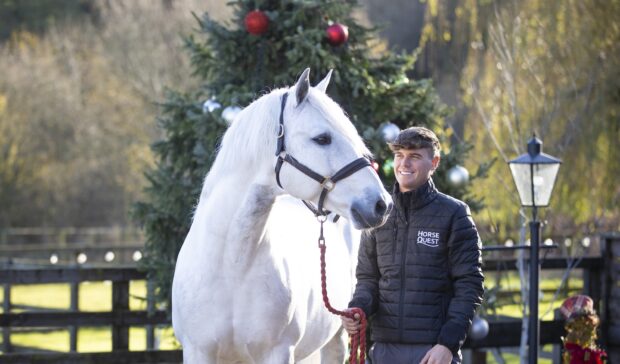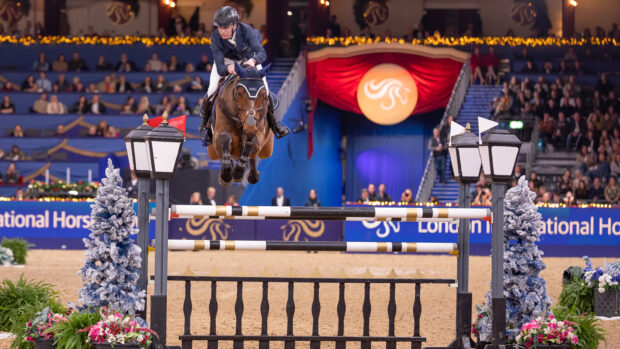When celebrity portrait photographer Lucy Sewill’s much-loved endurance mare had to be put down as a result of Cushing’s, she had a sudden realisation — she was suffering from the condition herself.
Horses have been part of Lucy’s life since childhood and her passion for them was reflected in her 2016 book Horses and Humans, which featured equestrian celebrities William Fox-Pitt and Chilli Morning, Kelly Marks and American Pie, Monty Roberts and Shy Boy and Dickie Waygood.
Lucy is a believer in the “special bond between horses and humans”, which she said helped her find the answer to debilitating symptoms that had plagued her for years.
“The relationships we have with our horses are so life-enhancing,” she said. ”The way animals and humans relate is extraordinary — including highlighting things that are wrong with us.”
An FEI endurance rider, Lucy had previously completed 100-mile rides with her 23-year-old Anglo-Arab Nutcracker. The mare had been enjoying a quieter life — although still “fit, athletic and active” — when she suffered a dramatic onset of symptoms.
“She just went stiff overnight. I called the vet and said I thought something was really wrong,” Lucy said. “By the next day she was lying down and couldn’t get up and she’d developed laminitis. The pedal bones rotated really quickly and we ended up putting her down there and then.”
The vet concluded that the laminitis had been caused by PPID (Cushing’s) — a condition where the pituitary gland loses the ability to control hormone production — although she had displayed none of the classic symptoms such as a thick and curly coat.
“When I thought about it afterwards, I did wonder if she’d had the Cushing’s when we were competing and if in its early stages it had given her more of a boost to keep going [it causes the over-production of cortisol, also known as the stress hormone],” Lucy said.
“Nothing came out on vet checks, her heart rate was always within the right parameters — it was naturally a bit high but didn’t go up much with exercise — she just never seemed to get tired and nor did I. Later I wondered whether we possibly both had it at the same time.”
Research
It was losing “Nutty” that prompted Lucy to do further research.
“It was such a shock when she died like that, I did do some Googling to learn more about it,” she said. “Coincidentally, I saw that dogs could also get it, as could humans — then it dawned on me that maybe I had it too and the more I looked, the more convinced I was.”
Lucy’s research led her to believe Cushing’s could be responsible for her years of ill-health. While common in horses, it is rare in humans, with only one or two new cases per million people each year in the UK. In humans, it is also more complicated and invasive to diagnose and Lucy had to push for tests.
“Luckily I had a sympathetic GP, who also owned a horse, and she knew exactly what it was in horses,” Lucy said. “She said it was very unlikely but I went back three times to talk about it and in the end she sent me for testing.”
Lucy’s hunch was confirmed after five days as an inpatient with a barrage of procedures that included an MRI.
While horses are usually prescribed medication, in people, the first step for treatment is usually surgery on the pituitary gland to remove the benign tumour behind the condition, as drugs can have unpleasant side effects.
Lucy had the operation within six months of diagnosis, carrying on working in the interim despite her symptoms.
“I had a big book to do so I didn’t tell anyone,” she revealed. “I organised the surgery for the day after I finished as I wasn’t going to miss out on that project! I was literally dragging myself round to shoots trying to pretend I was fine.”
Lucy said her symptoms highlighted to her what many horses with Cushing’s must be going through, possibly without their owners being aware.
“It made me realise how bad a horse with Cushing’s must feel. Cortisol is the fight and flight hormone and you’re producing way too much of it. Mentally is doesn’t feel nice, you are on red alert all the time — you can’t sleep very well and you’re always on a primitive programme for reaction that isn’t good for you,” she said.
“A lot of horses who get it are elderly, and it can manifest as lethargy, but I assume they must feel some of what I did and are always looking for a wolf in the hedge.”
Lucy added that while “most people had never heard of Cushing’s”, as soon as you mention it to a horse owner “they know what it is.”
Continues below…

New hope for horses with Cushing’s syndrome
Herbal treatment proves promising in US trial

Subscribe to Horse & Hound magazine today – and enjoy unlimited website access all year round
“They think I have a long curly coat and am a bit sweaty,” Lucy laughed. “You don’t have those symptoms in a person. While many older horses develop it, age isn’t a factor with people. It’s quite a familiar condition in horses but it gets treated in a different way in humans.”
The pituitary surgery has a 50% chance of success, and unfortunately for Lucy it was unuccessful. She had to undergo a second radical operation to remove her adrenal glands, which produce cortisol. This left her unable to make adrenaline, trading Cushing’s for another condition known as Addison’s syndrome.
Addison’s causes tiredness and sufferers live under the threat of an adrenal crisis — a stress on the body that it can no longer respond to — which can be fatal.
“I’ve had to deal with it and I’ve dealt with it, I don’t let it define me,” said Lucy, who is currently being successfully treated. “You live under the shadow of an adrenal crisis and I have to carry an emergency adrenaline injection around with me all the time.”
It has not stopped Lucy from further achievements and she has just finished a new book Dogs and Their Humans, featuring subjects including singer Gary Newman, DJ Sara Cox and comedian Matt Lucas.
“It was brilliant fun and it’s been lovely,” she said.
She has also bought a new American paint mare, Chica, to join her existing family herd of a Welsh section A and an Irish cob.
“She’s a reining horse,” she said. “I decided I needed to learn something new. She’s amazing and is already trained so she knows how to do it all — hopefully it’s something I won’t fall off doing!”
For all the latest news analysis, competition reports, interviews, features and much more, don’t miss Horse & Hound magazine, on sale every Thursday.




